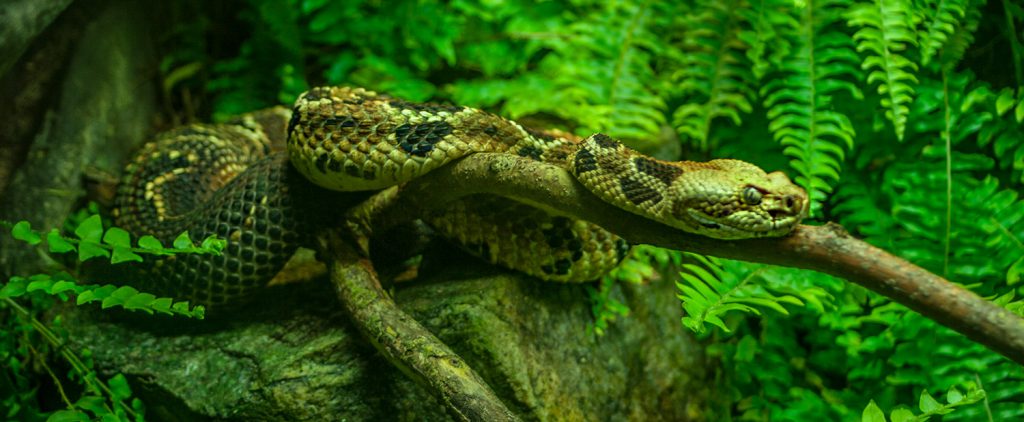
Yes, there are Rattlesnakes at Devil’s Lake, specifically the Timber Rattlesnake. However, it is not common to see one while hiking. Timber rattlesnakes tend to avoid areas where people are present, and they are typically not aggressive. When they sense your presence, they will usually crawl away. Although hikers have reported encountering rattlesnakes along the trails, these encounters are rare and can be avoided by remaining on the designated hiking paths.
Timber rattlesnakes are listed as a Protected Wild Animal in Wisconsin. This means it is illegal to take or kill this animal unless there is an immediate life-threatening situation involving human or domestic animal life. It is worth noting that there have only been two verified deaths in Wisconsin due to a rattlesnake bite since 1900, and on average, only one bite occurs every four years in the whole state. In the summer of 2000, a dog was bitten on the Steinke basin trail in Devil’s Lake State Park.
If you were bitten…
If you were to be bitten by a rattlesnake in the park, notify authorities immediately. Call 911 and follow instructions. Generally if you are bitten you need to keep calm and not exert yourself until help arrives.
From the Mayo Clinic
If possible, take these steps while waiting for medical help:
- Remain calm and move beyond the snake’s striking distance.
- Remove jewelry and tight clothing before you start to swell.
- Position yourself, if possible, so that the bite is at or below the level of your heart.
- Clean the wound, but don’t flush it with water. Cover it with a clean, dry dressing.
Caution
- Don’t use a tourniquet or apply ice.
- Don’t cut the wound or attempt to remove the venom.
- Don’t drink caffeine or alcohol, which could speed the rate at which your body absorbs venom.
- Don’t try to capture the snake. Try to remember its color and shape so that you can describe it, which will help in your treatment.
Other Snakes in the Park
In Devil’s Lake, it is more common to encounter the Northern Water Snake, which can be recognized by its grayish-brown color with a banded neck and alternating dark blotches on its back. The snake is not venomous, but it has an anticoagulant in its saliva that can cause significant bleeding when bitten. If you spot this snake, it’s important to back away and not touch it. The Northern Water Snake tends to be more aggressive if it feels cornered. This species is quite common in lakes, ponds, swamps, and other bodies of water throughout the Eastern United States and can grow up to 53 inches. You may see it basking on stumps and rocks or hunting along the weed beds.
In Devil’s Lake State Park, you may encounter approximately 13 species of snakes ranging in size from the small red-bellied snake, which is only about a foot in length, to the Black Rat Snake, which can reach up to 5 feet in length. However, it’s important to note that no snake in the park is venomous except for the Timber Rattlesnake.
As a visitor, it’s important to give snakes their space and avoid disturbing them. In general, snakes are shy creatures and will do their best to avoid human contact.
*ref: Lange, Kenneth L. 1989. Ancient Rocks And Vanished Glaciers: Worzalla Publishing Company, Stevens Point, Wisconsin. (pg 72)
